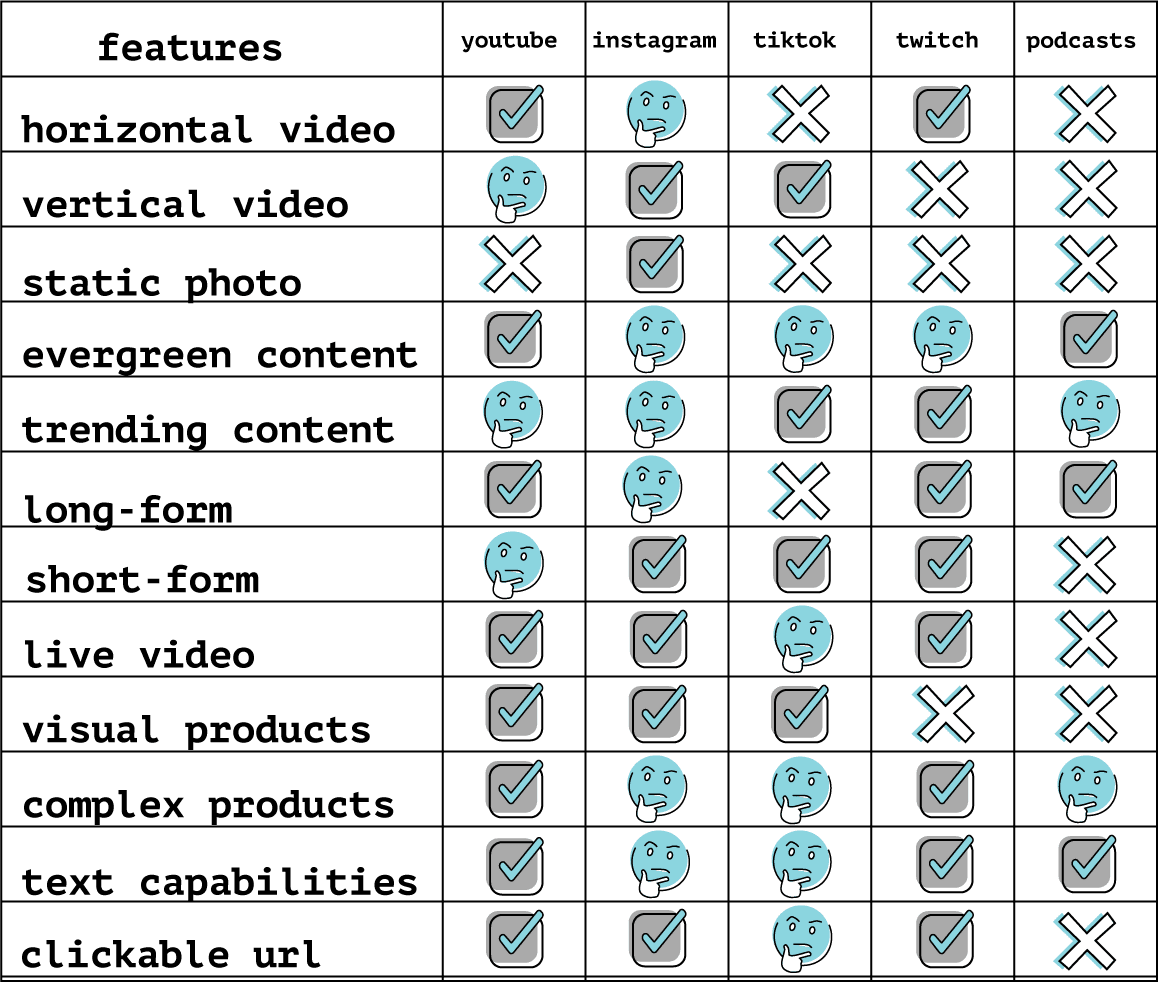7 Key Considerations of an Effective Influencer Marketing Strategy
Guest Post by David Hoos.
In our 15+ years running influencer programs for consumer brands, we’ve seen our fair share of underperforming strategies.
In that time, we’ve come to develop a list of key areas that we assess to diagnose a challenge properly before we try to prescribe any solution for a new client.
In this article, I’ll share the seven key elements we consider when mapping out a new influencer strategy.
7 Things To Consider for Your Influencer Marketing Strategy
1. Consider your campaign goals
In our experience, many brands will place conversions as their top goal, but there are a variety of reasons why you might want to make brand awareness your core goal, instead. Either way, it’s important to define what success looks like so you can compare your results against them and optimize your campaigns around them over time.
 Photo by Oliver Buchmann on Unsplash
Photo by Oliver Buchmann on Unsplash
2. Consider how complex your product is when narrowing platforms
The complexity of your product is a key consideration for selecting the best platforms.
If, for example, you’re using influencers to talk about a new shampoo, you have the benefit of a physical straightforward product in a familiar product category. Short-form videos and still photos work great for this, so you might look for influencers on Instagram, TikTok, and YouTube Shorts. Product Manager Skills involve understanding market trends and consumer preferences to determine the best platforms for product promotion.
If, on the other hand, you sell a nuanced hair regrowth device that consumers might have reservations about, then longer format might be a better way to go. We’ve found that creators who post longer-form videos have more of a trust-basis with their audiences, making complex/less tangible products an easier sell in this format.

3. Consider the limitations of each platform
Today, TikTok limits external linking except when you use their Spark Ads to boost content. Similarly, Instagram has their single ‘Link in Bio’ which limits your external links –except when you use a sticker in Instagram stories. YouTube, in contrast, allows every video to include external links.
It’s nuances like these that will inform which platform you want to work on, again based on the overall goals previously — below is a chart that includes different ad capabilities for social platforms you may find is a helpful initial outline.

Graphic Credit: The Outloud Group
4. Consider the size of the influencers
We’ve heard all sorts of advice about what size influencers you should work with — “Only pick small influencers because they have higher engagement!”, “Only pick large influencers because they have meaningful reach.”
The reality is, the most effective influencer programs have a mix of both. Too many small influencers and a program can become unsustainable and unwieldy to manage for one organization. Too many large influencers and you’re putting all your eggs in too few baskets.
A healthy influencer program has a portfolio of influencers just like a good investment portfolio. Some low-risk low-reward, some solid mid-performers, and some high-risk high-reward options to round it out.
5. Consider the niche of the influencers
Most brands that come to us typically have an idea of the core niche that will work best for them. Typically their core influencer looks like an archetype of their ideal client.
But it’s important to think beyond the obvious niches. For example, we had one client that sold a healthy vitamin supplement. You’d think their niche would be workout and other fitness gurus. You’d be partially right, but they’ve actually seen great success in unexpected niches like productivity and automotive influencers.
In the end, what we typically recommend is following an 80/20 approach. Spend 80 percent of your budget on the creator sizes and niches you know work and spend the other 20 on your experimental creators and niches. You never know where your next great fit partnership could come from.
6. Consider how you approach your influencer partnerships
Think about how many times you’ve purchased something after watching an inauthentic infomercial. Now think about how many times you’ve made a purchase after hearing or reading an authentic product review. It’s a lot more, right?
The same principle holds true when it comes to how you want to partner with influencers. We regularly see the greatest success come when brands give the most creative freedom to their influencer partners. Allowing freedom is beneficial, but it’s important to include certain considerations in your agreement with the influencer. Using electronic signatures enables you to sign contracts and work with freelancers globally.
We recognize that it can create some anxiety to cede some control to a creator you’re not that familiar with (yet), but from our experience, an influencers’ unique ability to advocate for a product in a way that sounds like an authentic product review is what most often drives results.
If their mention of your brand sounds suspiciously like your brand voice instead of their own, their audience is likely to smell it a mile away and you’ll likely see only a fraction of the results you may have had.
7. Consider how you measure
A major stereotype we’ve seen about influencers (that has often been reinforced by the ‘fake’ influencers that make the news) is that influencers might bring some awareness, but they don’t actually drive results.
We’ve found the exact opposite true. If anything, the key factor between an influencer that gets results and one that doesn’t is whether they have a strong authentic connection with their audience. This is incidentally why a lot of folks recommend smaller influencers. At a smaller size, many will still have an authentic connection to their audience (but again, this isn’t universally true).
In fact, it’s because of all these nuances that we worked with a third party firm to conduct research into measuring influencer marketing.
They used clickstream data to track user behavior after having seen a handful of influencer campaigns and then their behavior in the subsequent weeks was measured.
What they uncovered was that for every 1 visitor that they knew came from a campaign (via a link), another 5 came in indirectly via unattributable channels. Similarly, for every 1 sale, another 3 came in via unattributed routes.
In short, whatever results you CAN measure will be the minimum results that your campaign is driving, not the entire scope of those results.
Takeaway
At face value, influencer marketing can seem straightforward, but as anyone who has had to manage influencer campaigns can attest, there are many nuances that are important to understand.
I hope this overview has given you a better glimpse of the areas that you need to be thinking about as you venture into this exciting category of marketing.
Author Bio: David Hoos is a B2B Performance Marketing Manager at The Outloud Group. He helps DTC brands succeed by helping the Specialist Agencies that serve them market themselves better.
